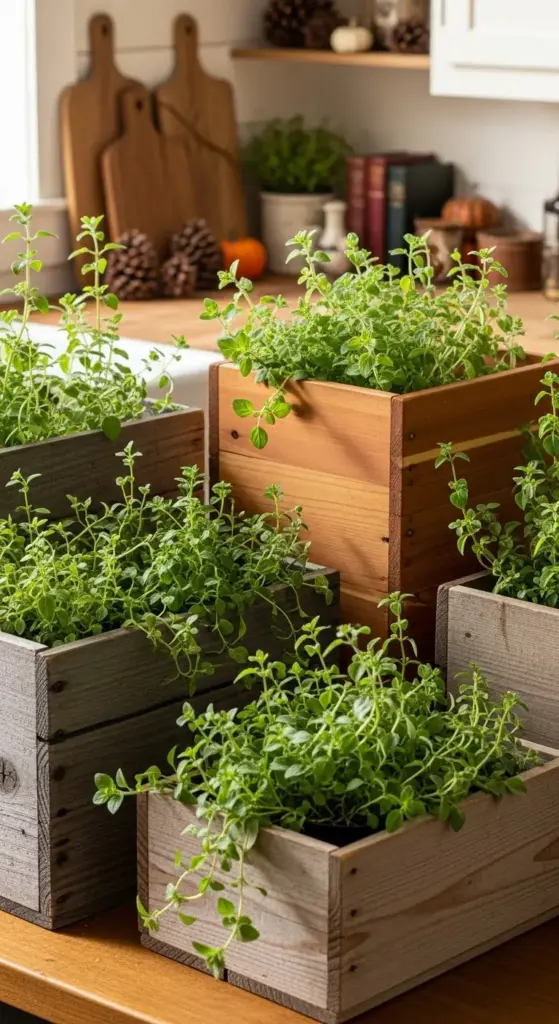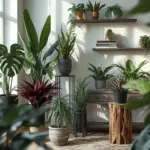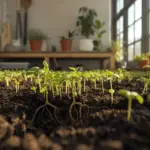5. Rustic Wooden Boxes for Hearty Oregano

My love affair with reclaimed wood planters started when I inherited my grandmother’s old wooden crates from her basement. They were dusty, weathered, and absolutely perfect for what I didn’t even know I wanted to do yet.
That first oregano plant in grandma’s old apple crate grew like it was trying to take over my entire kitchen. I’ve never seen herbs so happy as when they’re planted in authentic, weathered wood.
DIY Projects That Won’t Break Your Budget
Reclaimed wood planter projects can get expensive fast if you’re buying “distressed” wood from fancy stores. I learned this lesson after spending $80 on wood that looked exactly like the free stuff I found behind a local construction site.
The best reclaimed wood comes from old pallets, barn siding, or demolished structures. Just make sure you’re getting permission before hauling away someone’s “trash” – I had an awkward conversation with a contractor about that once.
Safety first with reclaimed wood – some older materials contain lead paint or chemical treatments. I always sand everything down and test with a lead kit from the hardware store. Better safe than sorry with something you’re growing food in.
My go-to design is a simple rectangular box using 1×6 cedar boards for the sides and 1×8 for the bottom. Cedar naturally resists rot and insects without needing chemical treatments that could leach into your soil.
Drainage holes are crucial – I drill five quarter-inch holes in the bottom, spaced evenly. Too few holes and your oregano drowns; too many and the soil falls out. It’s a delicate balance I learned through trial and error.
Mediterranean Oregano Varieties That Deliver
Mediterranean cuisine experts are pretty picky about their oregano, and after growing probably ten different varieties, I totally understand why. Not all oregano is created equal when it comes to authentic flavor.
Greek oregano is the gold standard for pizza sauce and Greek dishes. The flavor is intense, almost spicy, and it dries beautifully for winter storage. This variety loves the drainage that wooden boxes provide naturally.
Turkish oregano has this amazing earthy, almost smoky flavor that works incredible in meat dishes. It’s harder to find as seeds, but specialty herb suppliers usually carry it.
Italian oregano is milder and sweeter – perfect if you find Greek oregano too intense. I grow both varieties in the same wooden box because they complement each other perfectly in cooking.
Sicilian oregano is my secret weapon for authentic Italian cooking. The leaves are smaller but pack serious flavor punch. Restaurant chefs pay premium prices for this variety, but it grows easily in wooden containers.
Weatherproofing Without Losing Character
Long-lasting wooden containers require some protection, but you don’t want to lose that beautiful weathered look that makes reclaimed wood so appealing. I’ve tried everything from expensive marine varnishes to homemade linseed oil treatments.
Food-safe wood sealers are essential when you’re growing edible herbs. I use a penetrating sealer that soaks into the wood rather than creating a plastic-like surface coating.
Natural weatherproofing with linseed oil and beeswax works amazingly well and actually enhances the wood’s natural beauty. I apply this mixture twice a year – once in spring, once in fall.
The interior treatment is just as important as the exterior. I line my wooden boxes with landscape fabric to prevent soil contact with the wood while still allowing drainage.
Elevating wooden planters off surfaces prevents water damage to both the planter and whatever it’s sitting on. I use small wooden blocks or decorative plant feet – anything that creates airflow underneath.
Farmhouse Kitchen Vignettes That Wow
Farmhouse-style kitchens and wooden herb boxes are like peanut butter and jelly – they just belong together. The trick is creating intentional groupings that look collected over time rather than bought all at once.
I mix different wood tones and ages to create visual interest. A weathered gray box next to a warm honey-colored one tells a story and adds depth to your display.
Height variation is crucial for good vignettes. I use wooden crates, cutting boards, and vintage books to create different levels. The eye needs places to rest and move around the display.
Seasonal styling keeps your herb garden vignettes fresh and interesting. I add small pumpkins in fall, pinecones in winter, and fresh flowers in spring around my oregano boxes.
The functional beauty aspect is what makes these displays work in kitchens. Everything should be both pretty and practical – no purely decorative elements that just collect dust.
Companion Planting Strategies That Work
Wooden box gardens give you perfect control over companion planting because you can design the layout exactly how you want it. I’ve learned which herbs play well together and which ones need their own space.
Oregano and thyme are best friends in wooden planters. They have similar water and light needs, and the flavors complement each other in cooking. I plant them on opposite ends of longer boxes.
Basil and oregano work well together too, but basil needs more water. I plant the basil on one end where I can water it more frequently without drowning the oregano.
Avoid planting oregano with mint in the same container – mint will take over everything. I learned this the hard way and had to completely replant a beautiful wooden box after mint strangled my poor oregano.
Root space management is easier to control in wooden boxes than round pots. Oregano spreads horizontally, so rectangular containers give it room to expand naturally.
The visual appeal of companion planting in wooden boxes is incredible. Different leaf textures and colors create this living tapestry that changes throughout the growing season.
I plant taller herbs like rosemary in the back corners and let trailing oregano varieties spill over the front edges. It creates this layered, abundant look that screams “farmhouse garden.”
Ready to discover how artisan ceramics can elevate your sage game to restaurant-level sophistication? Click “next” to learn the color coordination secrets that’ll make your ceramic herb collection look like it belongs in a design magazine – plus the harvesting techniques that’ll keep your sage producing gourmet-quality leaves all year long!









GIPHY App Key not set. Please check settings